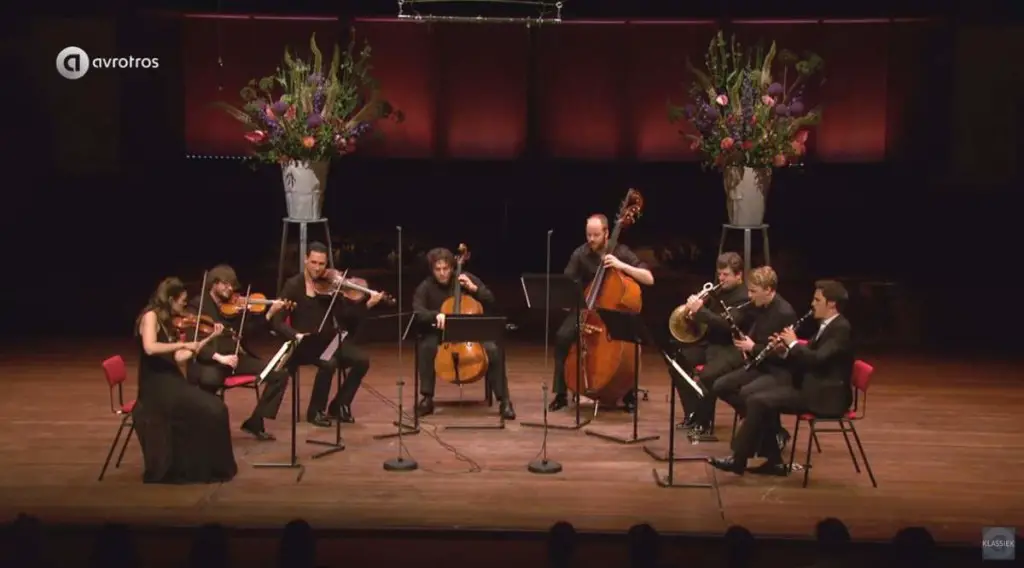Conducted by the famous Polish-German conductor Marek Janowski, the Dresdner Philharmonie (Dresden Philharmonic Orchestra) performs Frans Schubert’s Symphony No. 9 in C major, D 944, known as “The Great”, the final symphony of the composer. The renowned German orchestra celebrated its 150th anniversary with this concert in 2020.
Schubert’s Symphony No. 9 “The Great”
Franz Schubert’s Symphony No. 9 “The Great” (D 944) could also be called the “Long” symphony – since for many years it was considered the longest orchestral work of all time. The Austrian composer himself, however, never got to hear this Symphony in C major. It was not premiered until eleven years after his death by the Leipzig Gewandhaus Orchestra under the baton of Felix Mendelssohn Bartholdy. Robert Schumann had discovered it in Schubert’s musical estate and immediately recognized its artistic value.
Movements
With start times in the video:
- (00:00) Andante. Allegro ma non troppo
- (17:20) Andante con moto
- (31:35) Scherzo. Allegro vivace – Trio
- (45:20) Finale. Allegro vivace
1. Andante. Allegro ma non troppo
The first movement of Schubert’s Symphony No. 9, the “Great” Symphony (D 944), is a grand and expansive piece of music that sets the tone for the rest of the work. It is written in sonata form, which is a traditional structure used in classical music that consists of exposition, development, and recapitulation.
The movement begins with a majestic and fanfare-like introduction played by the brass section. This is followed by the exposition, which features a memorable and soaring theme played by the strings. The theme is then developed and elaborated upon, with different sections of the orchestra taking turns playing various melodies and motifs.
The development section is marked by dramatic changes in dynamics and mood, and Schubert makes use of complex harmonies and intricate counterpoints to create a sense of tension and drama. This tension is finally released in the recapitulation, where the original theme returns in a triumphant and joyous fashion.
Throughout the movement, Schubert demonstrates his skill in orchestration, utilizing the full range and power of the orchestra to create a grand and majestic sound. The movement is notable for its length, as it is longer than the entire average length of some classical symphonies.
2. Andante con moto
It is a lyrical and introspective Andante con moto. It is a stark contrast to the grand and expansive first movement, featuring a much more intimate and delicate sound.
The movement begins with a soft and gentle melody played by the strings, with occasional interjections from the woodwinds. The melody is developed and elaborated upon throughout the movement, with different sections of the orchestra taking turns playing the main theme.
One of the most notable features of the second movement is the use of solo instruments, particularly the oboe, clarinet, and horn. These instruments are used to great effect, adding to the overall intimate and melancholic mood of the movement.
The middle section of the movement features a more dramatic and intense melody, which gradually builds in intensity before subsiding back into the main theme. This section is marked by intricate counterpoints and complex harmonies, showcasing Schubert’s skill in composition.
The movement ends with a soft and delicate coda, featuring a solo violin playing a gentle and lyrical melody. This final section provides a sense of resolution and closure to the movement and sets the stage for the more lively and energetic third movement.
3. Scherzo. Allegro vivace – Trio
The third movement is a lively and playful Scherzo. It is a stark contrast to the introspective and melancholic second movement and serves as a refreshing and energetic interlude before the grand finale.
The movement begins with a fast and rhythmic theme played by the strings, which is then taken up by the winds and brass. The theme is then developed and elaborated upon throughout the movement, with different sections of the orchestra taking turns playing various melodies and motifs.
One of the most notable features of the third movement is the use of rhythm and tempo to create a sense of liveliness and energy. Schubert makes use of complex rhythmic patterns and syncopation to create a sense of motion and momentum that propels the movement forward.
The middle section of the movement features a slower and more melodic theme, which is then followed by a playful and whimsical section marked by intricate counterpoint and playful exchanges between different sections of the orchestra.
The movement ends with a reprise of the main theme, played with increased intensity and energy, leading to a grand and triumphant conclusion that sets the stage for the grand finale.
4. Finale. Allegro vivace
The fourth and final movement of Schubert’s Symphony No. 9, “The Great,” is a grand and powerful Allegro vivace. It is in an extended sonata form. It brings the symphony to a majestic and triumphant conclusion, building upon the themes and motifs introduced in the previous movements.
There are no less than six unique thematic elements in the main themes alone. The development section focuses on the third and sixth thematic elements. There is extensive use of ostinato in accompaniment of two of the thematic elements. Midway through this final movement, Schubert pays tribute to Beethoven by quoting from the finale of his Ninth Symphony. The recapitulation is unusual in that it begins in E-flat, modulates to F major, and then to the tonic (rather than everything being in the tonic as expected).
Sources
- Symphony No. 9 “The Great” (Schubert) on Wikipedia


Antecipa Bruckner.